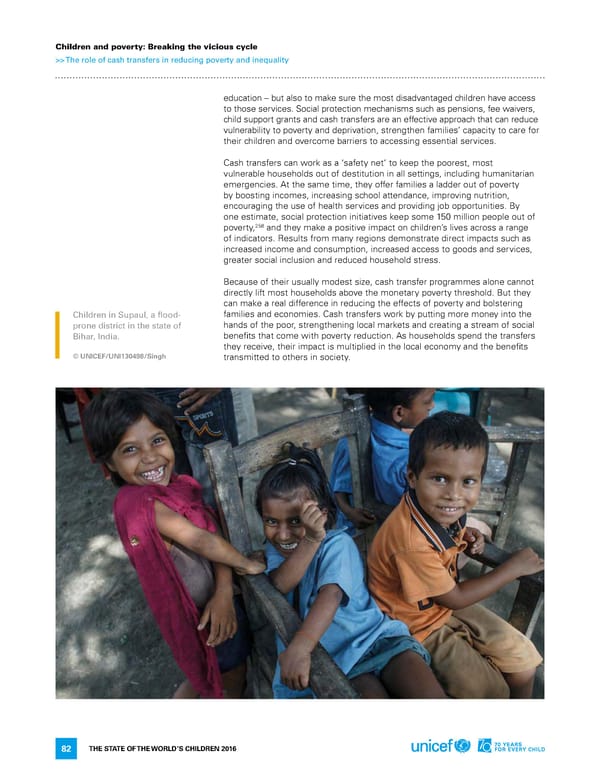Children and poverty: Breaking the vicious cycle >> The role of cash transfers in reducing poverty and inequality education – but also to make sure the most disadvantaged children have access to those services. Social protection mechanisms such as pensions, fee waivers, child support grants and cash transfers are an effective approach that can reduce vulnerability to poverty and deprivation, strengthen families’ capacity to care for their children and overcome barriers to accessing essential services. Cash transfers can work as a ‘safety net’ to keep the poorest, most vulnerable households out of destitution in all settings, including humanitarian emergencies. at the same time, they offer families a ladder out of poverty by boosting incomes, increasing school attendance, improving nutrition, encouraging the use of health services and providing job opportunities. By one estimate, social protection initiatives keep some 150 million people out of 258 poverty, and they make a positive impact on children’s lives across a range of indicators. results from many regions demonstrate direct impacts such as increased income and consumption, increased access to goods and services, greater social inclusion and reduced household stress. Because of their usually modest size, cash transfer programmes alone cannot directly lift most households above the monetary poverty threshold. But they can make a real difference in reducing the effects of poverty and bolstering Children in Supaul, a flood- families and economies. Cash transfers work by putting more money into the prone district in the state of hands of the poor, strengthening local markets and creating a stream of social Bihar, India. benefits that come with poverty reduction. as households spend the transfers they receive, their impact is multiplied in the local economy and the benefits © UNICEF/UNI130498/Singh transmitted to others in society. The STaTe of The World’S Children 2016 82
 70 Years for Every Child Page 98 Page 100
70 Years for Every Child Page 98 Page 100